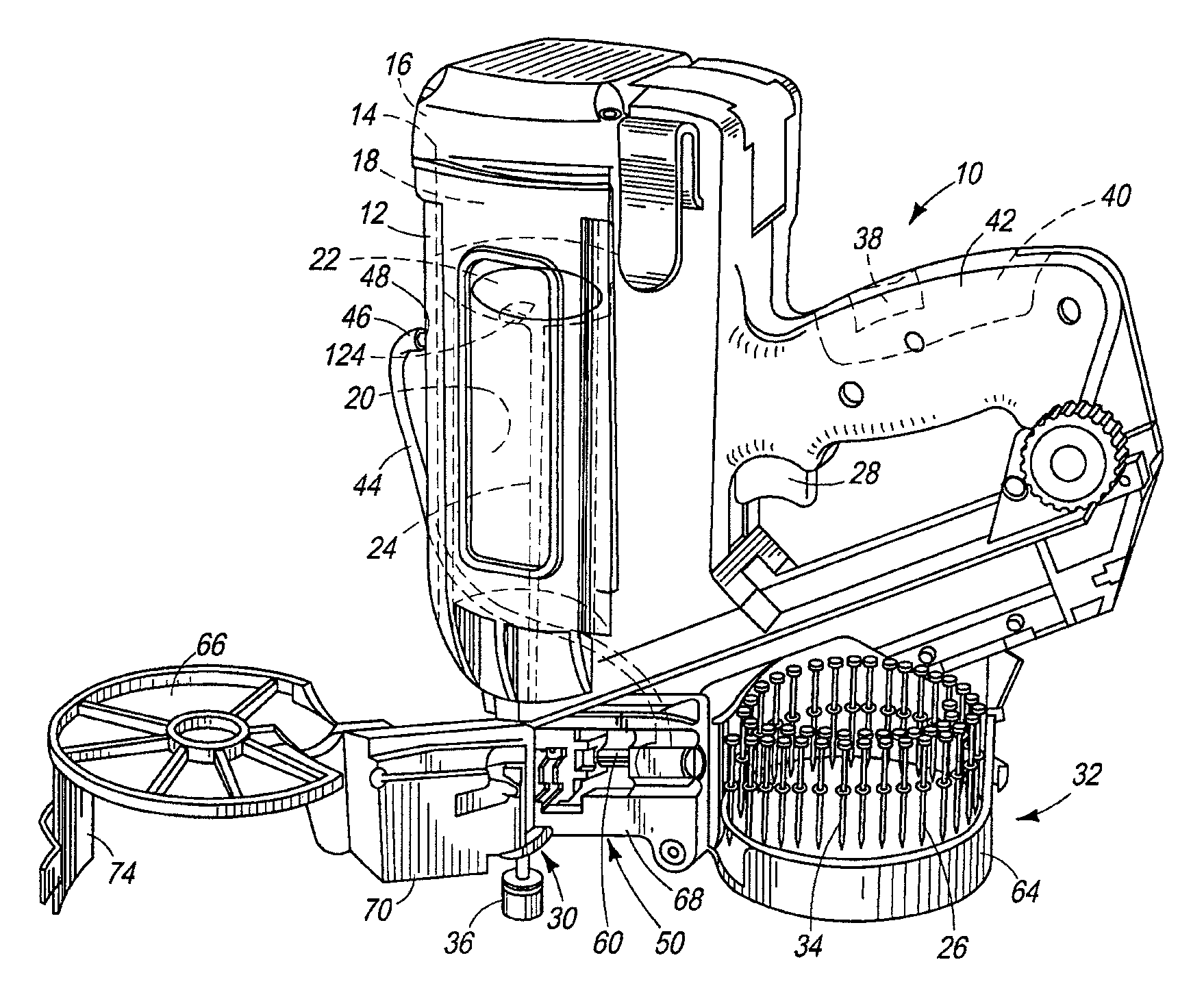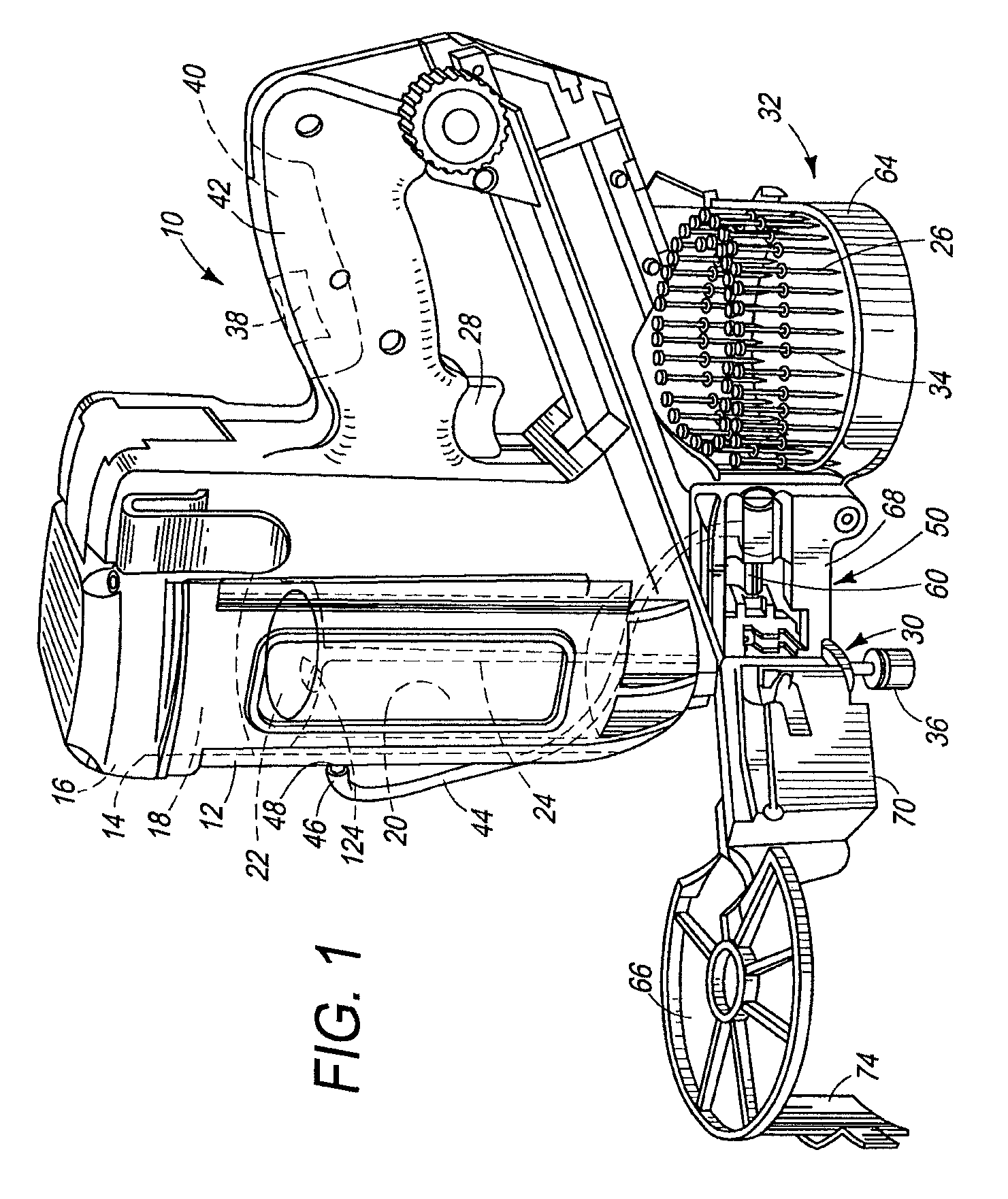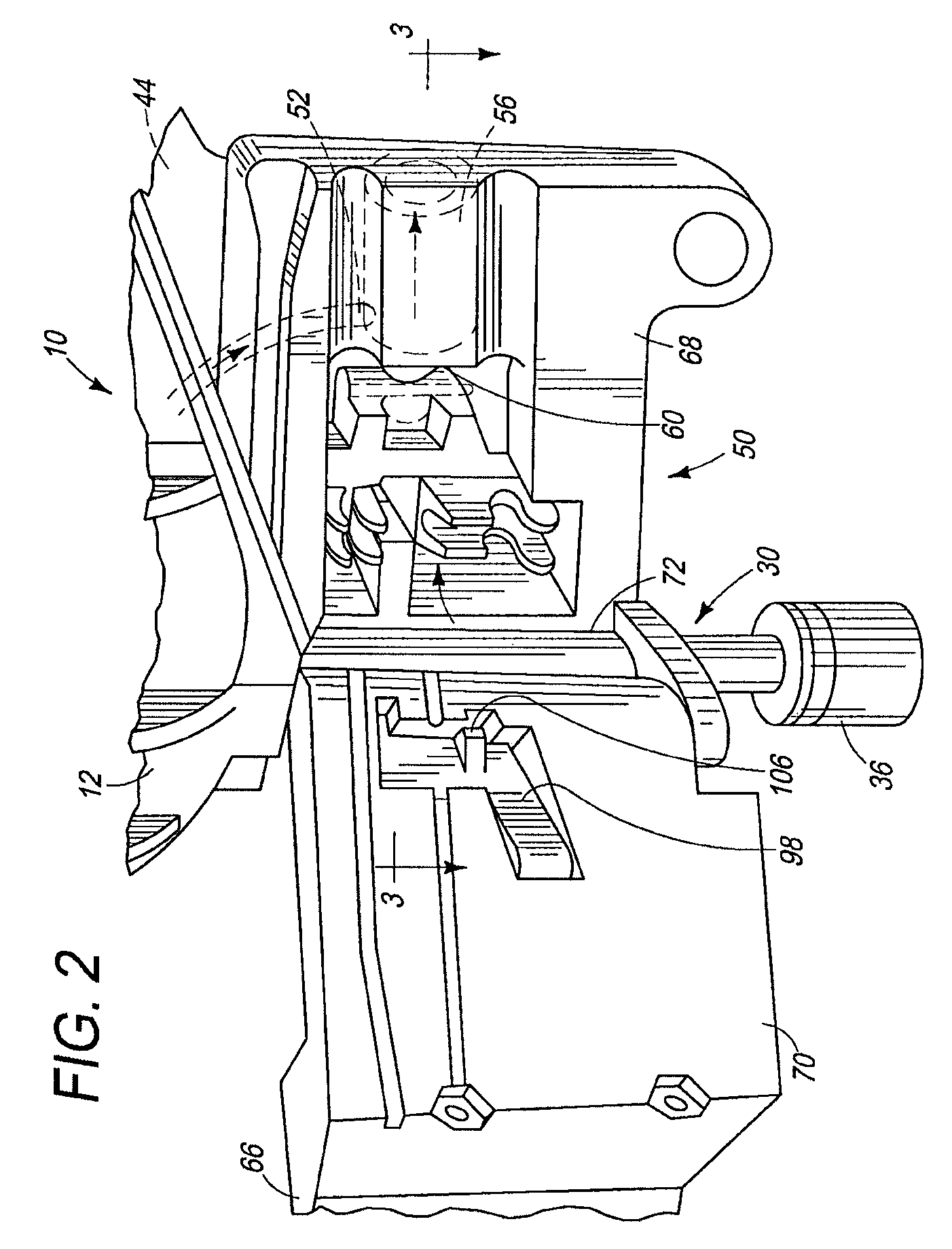Fastener feeder delay for fastener driving tool
a technology of fastener and feeder, which is applied in the field of fastener driving tools, can solve the problems of less reliable mechanism of '264 patent, unsatisfactory nail drive, and less control of nail or collation drive, so as to reduce frictional load, reduce nail or collation malfunction, and improve piston return speed and reliability
- Summary
- Abstract
- Description
- Claims
- Application Information
AI Technical Summary
Benefits of technology
Problems solved by technology
Method used
Image
Examples
Embodiment Construction
[0028]Referring now to FIGS. 1-4, a fastener driving tool of the type suitable with the present feeder mechanism is generally designated 10 and is depicted as a combustion-powered tool. The general principles of operation of such tools are known in the art and are described in U.S. Pat. Nos. 5,197,646; 4,522,162; 4,483,473; 4,483,474 and 4,403,722, all of which are incorporated by reference. However, it is contemplated that the present feeder mechanism is applicable to fastener driver tools powered by other power sources that employ a reciprocating driver blade for driving fasteners into a workpiece. Also while it should be understood that the tool 10 is operable in a variety of orientations, directional terms such as “upper” and “lower” refer to the tool in the orientation depicted in FIG. 1.
[0029]Referring to FIGS. 1-4 and 11, a housing 12 of the tool 10 encloses a self-contained internal power source 14 (FIG. 11) within a housing main chamber 16. As in conventional combustion too...
PUM
 Login to View More
Login to View More Abstract
Description
Claims
Application Information
 Login to View More
Login to View More - R&D
- Intellectual Property
- Life Sciences
- Materials
- Tech Scout
- Unparalleled Data Quality
- Higher Quality Content
- 60% Fewer Hallucinations
Browse by: Latest US Patents, China's latest patents, Technical Efficacy Thesaurus, Application Domain, Technology Topic, Popular Technical Reports.
© 2025 PatSnap. All rights reserved.Legal|Privacy policy|Modern Slavery Act Transparency Statement|Sitemap|About US| Contact US: help@patsnap.com



